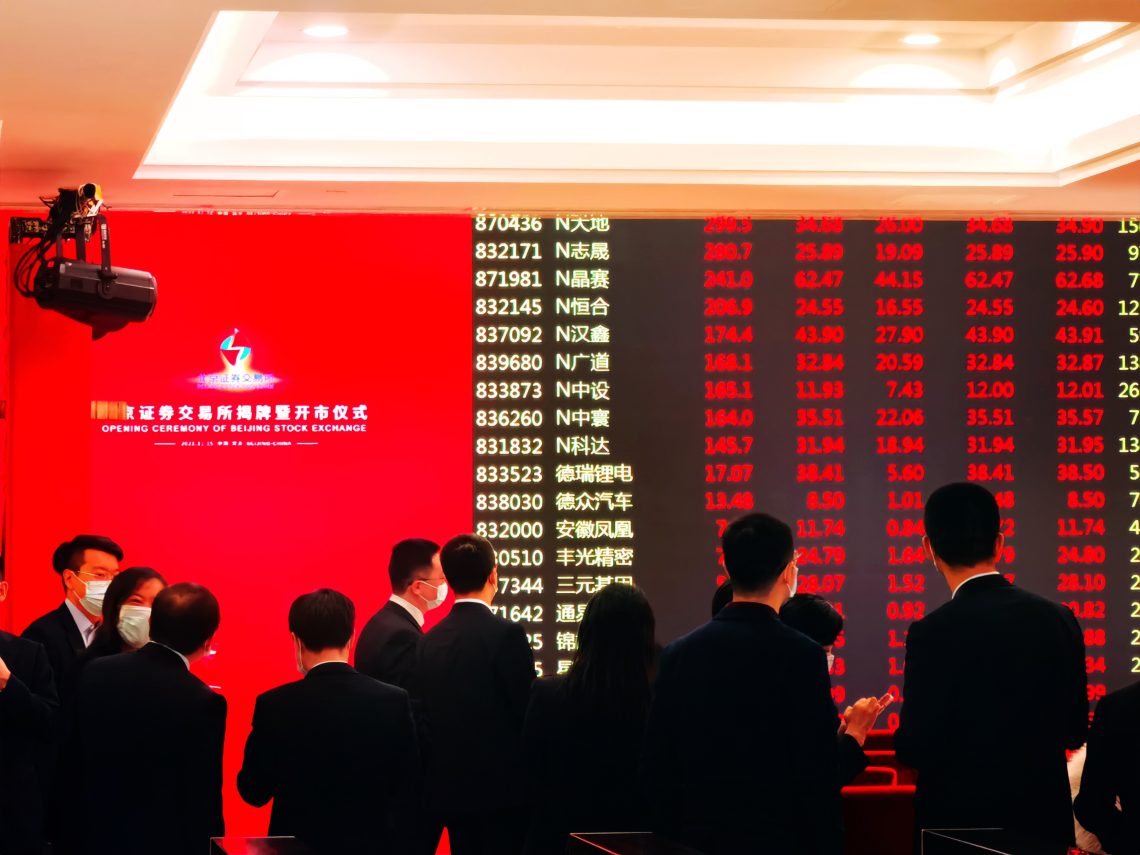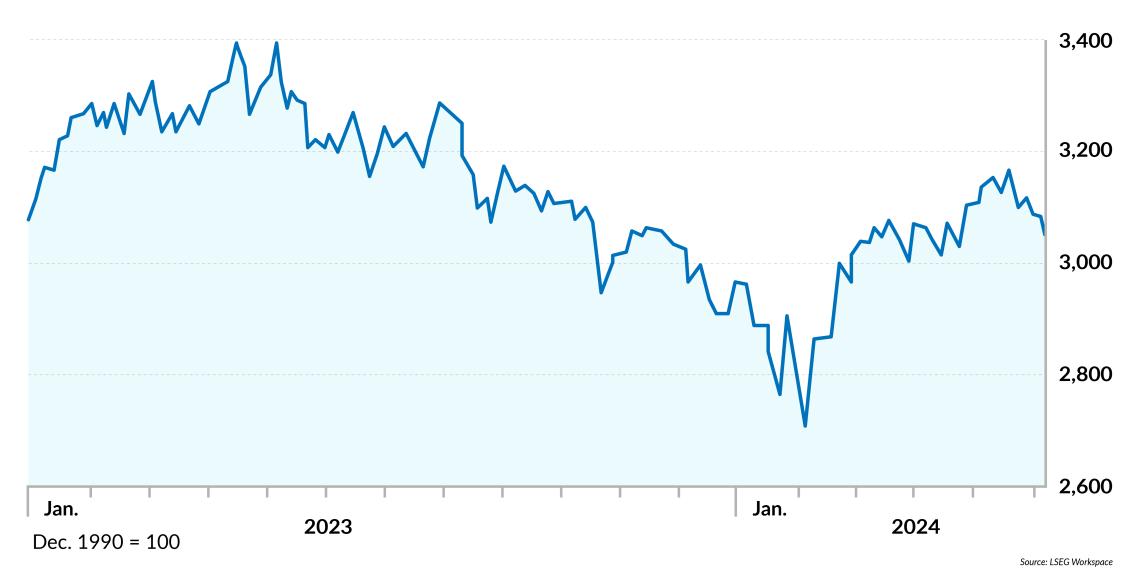China’s stock markets have become an extension of state policy, with the Communist Party influencing both strategic decisions and market operations.

In a nutshell
- The Chinese stock market aligns closely with government priorities
- President Xi uses the stock market to prop up state-owned enterprises
- Information asymmetry and insider control are creating major distortions
Once driven by market forces, China’s stock market now serves as a strategic instrument in a tightly controlled mixed economy. Under previous administrations, there was a notable push toward pro-market reforms, which allowed for a degree of responsiveness to global financial trends. However, with President Xi Jinping at the helm, the landscape has changed.
Mr. Xi has now deeply embedded the stock market into the state’s strategic objectives. This has not only intensified the role of government directives but also significantly widened the gap between state policy and market expectations.
Supporting state-owned enterprises
The first Chinese securities firm began stock trading in 1869. By the eve of World War II, Shanghai’s stock market had grown to become one of the largest in the world. However, after the founding of the People’s Republic of China in 1949, the government ordered the stock exchange to close down.
Reform eventually led to the revival of the stock market. From the outset, the authorities tasked the securities market with financing state-owned enterprises. This made the securities market in China a tool for financing, in contrast to mature market economies primarily driven by investment. This initial focus on financing introduced several inherent flaws into the Chinese market.
The specific nature of stock trading in China
The way supply and demand are formed on the Chinese stock market is unique. The total number of listed companies is tightly controlled by the government. These companies are chosen by brokerage firms and expert panels, rather than market dynamics.
The market is segmented into state shares, corporate shares, individual shares and foreign shares. State and corporate shares, which make up 65 percent of all shares, cannot be listed or transferred. The China Securities Regulatory Commission (CSRC) guidelines state that shareholders’ rights and obligations depend on the type of shares they hold, legitimizing different prices and rights for the same shares. This fragmentation significantly reduces market efficiency.
Facts & figures
Shanghai Composite Index, 2023-2024


Stock markets before and after Xi Jinping
The development of China’s stock market can be split into two distinct eras, with President Xi’s ascension to power as the turning point. In the earlier phase, the increased participation of financial institutions and the growing sophistication of individual investors contributed to the restructuring and partial privatization of state-owned enterprises and sped up the listing of new companies. During this period, the stock market played a positive role in advancing China’s transition toward a market economy – although admittedly, opacity and behind-the-scenes practices were widespread.
When Mr. Xi came to power in 2013, the Chinese Communist Party (CCP) began controlling Chinese companies more tightly. Businesses with substantial global assets, such as Anbang, Dalian Wanda, Fosun, HNA, Huarong Asset Management and Alibaba’s Ant Financial, have faced liquidation, divestment, nationalization or have been pressured to sell their assets.
Under President Xi, particularly in the post-pandemic period, a new “top-down national system” has been introduced to accelerate technological advancements in strategic sectors through centralized leadership. To achieve this, the CCP plans on bringing companies in industries like semiconductor manufacturing, biotechnology and electric vehicles to public markets. The Chinese government has therefore been reluctant to allow large technology companies to be listed on United States exchanges, since this would subject them to U.S. laws and independent audits.
Chinese leadership knows that, to compete with American technology, the country will need both foreign and domestic investment. While foreign investors traditionally invested in Chinese assets listed offshore, they are now able to invest directly in Chinese stocks, bonds and futures in the onshore market.
Bailout without lasting change
The Chinese stock market has been performing poorly since the end of 2021, losing approximately $6 trillion in value. In February 2024, the Chinese government intervened to shore up stock prices. Yi Huiman, the country’s top market regulator, was abruptly dismissed, serving as a scapegoat for the continued decline of the stock market.
However, the authorities failed to address the root cause of the slump in confidence. Shareholders have lost faith in China’s growth prospects and the government’s willingness to develop a comprehensive policy agenda to tackle major issues. The lack of a solid economic recovery plan to stabilize and reduce financial risks, coupled with the stringent zero-COVID policy, has contributed to this decline.
More by Junhua Zhang
Escalating tensions between the U.S. and China have also affected China’s economic growth. Competition has expanded from technology to trade and finance, with the Biden administration imposing restrictions on certain U.S. investments in China. Consequently, large pension and endowment funds from the U.S. and its allies have reduced their investments in China to avoid political risk.
Although the market has now recovered, the February bailout has not addressed fundamental issues. For instance, the CSRC implemented a controversial solution by limiting real-time trading data. This lack of transparency led many investors to assume the worst and preemptively sell stocks, further eroding market confidence and stability.
Scenarios
Most likely: More active but still unstable stock market
In the coming decade, significant changes are anticipated in the world’s major stock markets. The U.S. has seen a remarkable 152 percent rise, India an impressive 227 percent, Japan 111 percent and Germany 81 percent. Taiwan’s stock market continues its upward surge, whereas China’s A-shares have experienced a 20 percent decline. However, this downturn suggests considerable growth potential for China’s A-shares in the future.
Currently, in China, 60 percent of individual household assets are tied up in real estate, while only about 5 percent are invested in stocks. If a prolonged real estate downturn occurs, it could prompt asset transfers and stimulate a more active stock market.
The reality of the Chinese stock market is complex. Multiple levels of government, from the central to various local levels, influence market operations. This complicates the standard tools for assessing valuation or performance, as earnings, book value of assets and market prices can be manipulated. Nowadays, even state-owned enterprises engage in such practices.
The political landscape further adds to the uncertainty. The CSRC has pledged to increase penalties for fraudulent listings, accounting fraud and misappropriation of funds by major shareholders. But, due to the CCP’s overarching control and lack of independent legal oversight, issues like limited transparency and insider trading are likely to persist.
The Xi administration views the market as an auxiliary tool, rather than a driving force or regulatory factor. Today’s CCP leadership is more confident in implementing their own industrial policies compared to their predecessors. As a result, China’s stock market will continue to serve as a source of additional funding for industries chosen by the leadership. This means it will remain a world apart from Western-style stock markets, where performance and market value dictate the fate of a stock.
For industry-specific scenarios and bespoke geopolitical intelligence, contact us and we will provide you with more information about our advisory services.
Read More: The strategic role of Chinese stock markets – GIS Reports

